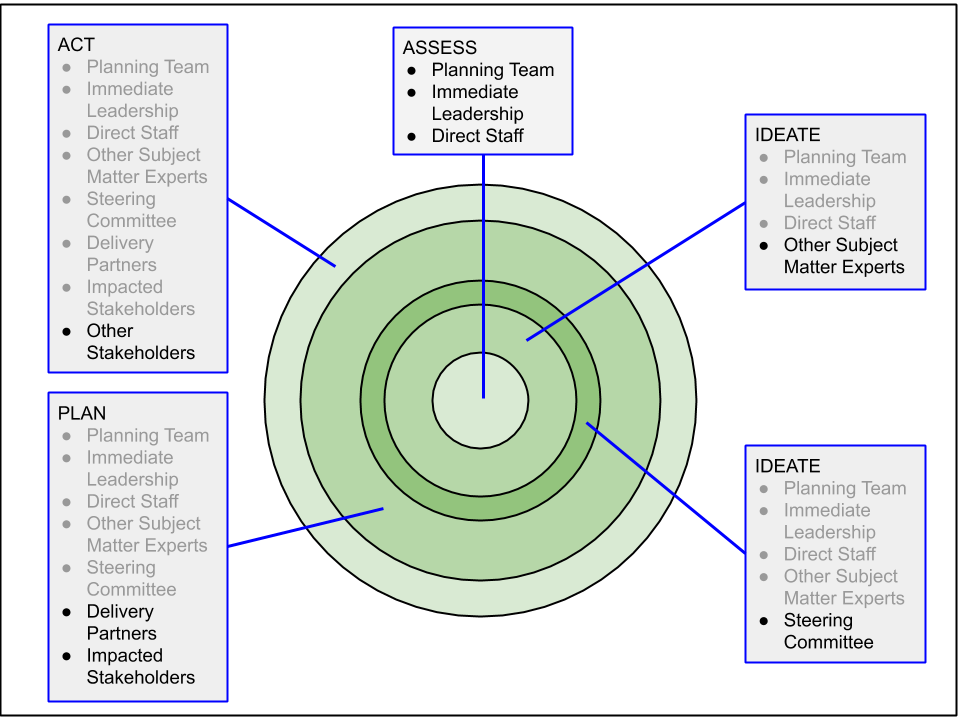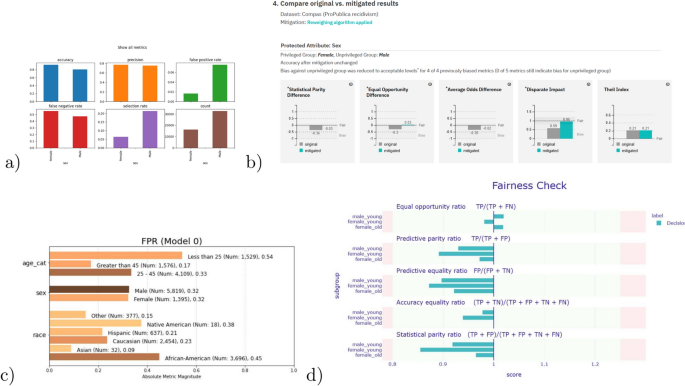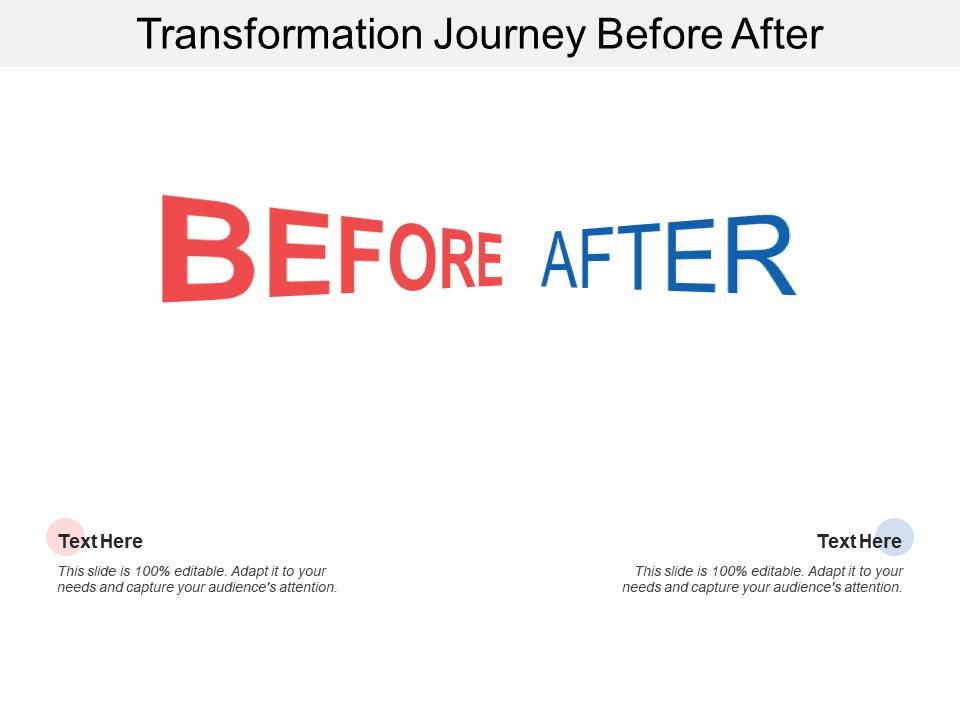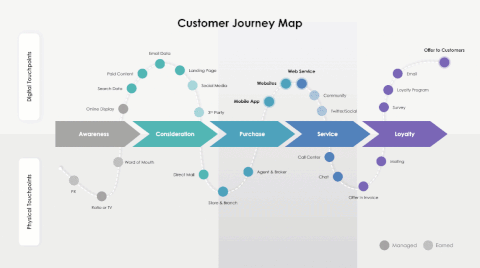Transparency as a Strategic Asset: Mastering High-Stakes Presentations
How visual clarity builds trust and accelerates critical business decisions
I've discovered that in today's high-pressure business environments, transparency isn't just an ethical choice—it's a strategic advantage. Throughout my experience with executive presentations, I've seen how clarity creates cognitive ease and builds instant credibility, while opacity undermines confidence and delays critical decisions.
The Transparency Imperative in High-Stakes Environments
I've learned that transparency isn't just a buzzword—it's the foundation of successful high-stakes presentations. When millions of dollars, strategic decisions, or company reputations hang in the balance, opacity becomes your biggest liability.
The Hidden Cost of Opacity
In my experience working with executives, I've observed that unclear presentations don't just waste time—they actively erode trust. When decision-makers can't quickly grasp your message, they default to skepticism and delay making critical decisions.
This "trust threshold" varies depending on your audience and the stakes involved. Board presentations require the highest level of transparency, while internal team briefings might allow for more gradual revelation of information.
-2.png?width=1110&height=501&name=PSIT%20Bigger%20Graphics%20(1)-2.png)
The Psychology of Decision-Maker Clarity
I've studied how executive decision-making works, and the research is clear: cognitive ease directly correlates with trust and approval. When information is presented with crystal clarity, decision-makers experience less cognitive strain and are more likely to respond favorably to your proposals.
The Trust-Clarity Connection
This chart illustrates the relationship between presentation clarity and executive trust levels:
The Transparency Paradox
I've discovered a counterintuitive truth in my work with high-stakes presentations: sometimes more information creates less understanding. This "transparency paradox" occurs when presenters confuse data dumping with clarity.
The Transparency Paradox Explained
flowchart TD
A[Information Volume] -->|Too Little| B[Incomplete Understanding]
A -->|Just Right| C[Optimal Transparency]
A -->|Too Much| D[Cognitive Overload]
B --> E[Low Trust & Delayed Decisions]
C --> F[High Trust & Quick Decisions]
D --> E
style C fill:#FF8000,stroke:#333,stroke-width:2px
style F fill:#66BB6A,stroke:#333,stroke-width:2px
True transparency isn't about showing everything—it's about showing the right things in the right way. As I work with clients on visually appealing presentations, I emphasize that visual clarity transforms complex information into instantly comprehensible insights that establish immediate credibility.
Architecting Transparent Presentation Structures
I've found that the architecture of your presentation is just as important as its content. A clear structure creates a cognitive map that helps decision-makers navigate your ideas with confidence.
The Science Behind Structural Simplicity
My research into cognitive processing confirms what I've observed in boardrooms: 3-part frameworks consistently outperform complex structures in high-pressure environments. When executives are under pressure, their cognitive capacity for processing complex structures diminishes.
Effectiveness of Different Presentation Structures
Transparent Navigation: Creating Visual Signposts
I always emphasize the importance of visual signposts that orient decision-makers throughout your presentation. These act as cognitive anchors that reduce mental effort and increase retention.
Effective Presentation Navigation Structure
flowchart TD
A[Clear Opening Statement] --> B[Agenda Preview]
B --> C{Main Content}
C --> D[Section 1]
C --> E[Section 2]
C --> F[Section 3]
D --> G[Mini-Summary]
E --> H[Mini-Summary]
F --> I[Mini-Summary]
G --> J[Final Summary]
H --> J
I --> J
J --> K[Specific Call to Action]
style A fill:#FF8000,stroke:#333,stroke-width:1px
style B fill:#FF9A3C,stroke:#333,stroke-width:1px
style K fill:#FF8000,stroke:#333,stroke-width:1px
When creating engaging project presentation structures, I've found that strategic information layering is essential. This technique reveals complexity progressively without overwhelming the audience, allowing decision-makers to digest information at a comfortable pace.
The "Executive Lens" Technique
One of my most effective approaches is structuring content from the decision-maker's perspective. This "executive lens" technique ensures that every slide answers the questions most relevant to your audience's priorities.
I've developed this framework after years of observing how executives process information. They typically want to know: 1) What's the situation? 2) What are the implications? 3) What actions are required? 4) What's the expected outcome?

When designing presentations, I've found that using AI tools to rapidly prototype different structural approaches helps test for maximum clarity. This allows me to iterate quickly and find the most effective way to present complex information.
Data Visualization for Maximum Transparency
In my experience, effective data visualization is the cornerstone of transparent high-stakes presentations. The right visual can communicate in seconds what might take minutes to explain verbally.
Beyond Basic Charts: Advanced Visualization Techniques
I've moved beyond basic charts to embrace advanced visualization techniques that reveal insights rather than just displaying data. These techniques transform raw numbers into meaningful stories that drive decisions.
Visualization Impact Comparison
The Transparency Principle in Data Presentation
I follow a key principle in my presentations: show raw data when credibility is paramount, and use interpretive visualizations when insight is the goal. This balanced approach maintains trust while facilitating understanding.
When creating impactful product presentations, I've found that this principle helps executives trust both the data and your interpretation of it.

Visual Ethics: Ensuring Accurate Representation
I take visual ethics seriously in my presentations. Ensuring your data visualizations accurately represent reality without distortion is not just ethical—it's essential for maintaining long-term credibility with decision-makers.
Visual Ethics Decision Framework
flowchart TD
A[Data to Visualize] --> B{Is scale appropriate?}
B -->|No| C[Adjust scale to show true proportions]
B -->|Yes| D{Are comparisons fair?}
D -->|No| E[Ensure apples-to-apples comparison]
D -->|Yes| F{Is context provided?}
F -->|No| G[Add relevant context]
F -->|Yes| H{Is uncertainty acknowledged?}
H -->|No| I[Show confidence intervals/ranges]
H -->|Yes| J[Ethically Sound Visualization]
C --> B
E --> D
G --> F
I --> H
style J fill:#66BB6A,stroke:#333,stroke-width:2px
Creating Visual Hierarchies
I've mastered the art of creating visual hierarchies that guide attention to the most critical insights. This technique ensures that even in data-rich presentations, the key points stand out immediately.
Attention Distribution in Well-Designed vs. Poor Visualizations
I've found that leveraging advanced search capabilities to discover and integrate the most compelling data visualization formats for specific content can dramatically improve presentation impact. The right visualization format can make complex data instantly understandable, even to non-technical decision-makers.
Transparent Communication Techniques for High-Pressure Moments
Beyond structure and visuals, I've found that the language and delivery techniques you use can dramatically impact the transparency of your presentation. These verbal strategies build instant credibility in high-stakes environments.
Linguistic Transparency: Verbal Techniques That Signal Honesty
I've developed specific linguistic patterns that signal honesty and build instant credibility. These include precise quantification, appropriate hedging, and transparent reasoning structures.
For example, I've found that phrases like "Based on our analysis of X, we believe Y" are more credible than absolute statements like "Y is definitely true." This transparency about your reasoning process builds trust.

Managing Uncertainty: The Transparency Approach
I've learned that transparently addressing unknowns actually strengthens your position rather than undermining it. This counterintuitive approach builds credibility by demonstrating intellectual honesty.
Uncertainty Management Framework
flowchart TD
A[Identify Uncertainty] --> B[Assess Impact]
B --> C{Is it material?}
C -->|Yes| D[Disclose Proactively]
C -->|No| E[Prepare for Q&A]
D --> F[Explain Mitigation Plans]
D --> G[Share Monitoring Approach]
F --> H[Frame as Risk Management]
G --> H
style D fill:#FF8000,stroke:#333,stroke-width:1px
style H fill:#66BB6A,stroke:#333,stroke-width:1px
When creating presentation ideas that address uncertainty, I focus on showing my thought process and mitigation strategies rather than glossing over potential issues.
The "Pre-emptive Transparency" Technique
One of my most effective approaches is what I call "pre-emptive transparency"—addressing potential objections before they arise. This technique demonstrates foresight and thoroughness while defusing potential criticism.
Impact of Pre-emptive Transparency on Decision Outcomes
Balancing Confidence with Vulnerability
I've discovered that the most persuasive presenters balance confidence with appropriate vulnerability. This authentic approach creates connection while maintaining authority.
| Communication Style | Perceived Credibility | Emotional Connection | Best For |
|---|---|---|---|
| Overly Confident | Medium-Low | Low | Crisis situations requiring immediate action |
| Balanced Confidence + Vulnerability | High | High | Strategic decisions, long-term partnerships |
| Overly Tentative | Low | Medium | Early-stage ideation, collaborative workshops |
I've found that elevate presentations with audio and visuals can help strike this perfect balance between authoritative and approachable. The right visual and verbal cues together create a presentation style that builds both trust and connection.
From Transparency to Action: Driving Clear Decisions
I've learned that transparency isn't just about clarity—it's about driving action. The most successful high-stakes presentations don't just inform; they compel specific decisions.
The Anatomy of a Compelling, Transparent Call to Action
In my experience, effective calls to action in high-stakes presentations follow a specific formula that combines clarity, urgency, and value.
Anatomy of an Executive-Level Call to Action
flowchart TD
A[Specific Request] --> B[Clear Timeframe]
A --> C[Required Resources]
A --> D[Expected Outcome]
B --> E[Decision Request]
C --> E
D --> E
E --> F[Next Steps]
style A fill:#FF8000,stroke:#333,stroke-width:1px
style E fill:#FF9A3C,stroke:#333,stroke-width:1px
style F fill:#66BB6A,stroke:#333,stroke-width:1px
I've found that being direct with executives is essential. Rather than ending with "Any thoughts?" I use specific language like "I'm requesting your approval on X by Friday to enable us to achieve Y outcome by Q3."
Decision Architecture: Structuring Choices
I've developed an approach to structuring choices that facilitates clear decision-making. This "decision architecture" presents options in a way that makes the trade-offs transparent and the path forward clear.
Decision Architecture Effectiveness
I've discovered that presenting exactly two or three well-differentiated options typically leads to the fastest and clearest decisions. Too few choices feels constraining, while too many creates decision paralysis.
The "Consequence Transparency" Framework
I've developed what I call the "consequence transparency" framework—clearly articulating the implications of different choices. This approach helps decision-makers understand not just what they're choosing, but what will happen as a result.
By making consequences explicit, I help executives connect their decisions to real-world outcomes, increasing their confidence and commitment to the chosen path.

Establishing Transparent Follow-up Protocols
I've found that establishing transparent follow-up protocols maintains momentum after the presentation. This creates accountability and ensures that decisions translate into action.
| Follow-up Element | Purpose | Timing | Format |
|---|---|---|---|
| Decision Summary | Document exact decisions made | Within 24 hours | Concise email with bullet points |
| Action Plan | Outline specific next steps | Within 3 days | Visual timeline with owners |
| Progress Update | Show momentum and early wins | 1-2 weeks | Brief status dashboard |
| Milestone Review | Validate approach and adjust | At key milestones | Results-focused presentation |
I've found that transforming abstract action plans into visual roadmaps helps executives immediately grasp and approve next steps. These visual timelines create clarity about sequence, dependencies, and accountability.
Case Studies: Transparency Transformations in Critical Presentations
I've collected several real-world examples that demonstrate how transparency transforms high-stakes presentations and accelerates decision-making.
Board Presentation Case Study
In my work with a technology company seeking board approval for a major strategic shift, we implemented visual transparency principles that dramatically shortened decision time.
By transforming complex market analysis into clear visual comparisons and creating a transparent decision framework, we reduced the typical three-meeting approval process to a single decisive meeting—shortening decision time by 65%.

Investor Pitch Transformation
I worked with a startup that had struggled to secure Series B funding despite strong fundamentals. By applying radical transparency principles to their investor pitch, we transformed skepticism into support.
Before and After: Investor Response Metrics
The key transformation was proactively addressing the very concerns investors had been raising in private. By bringing these issues into the open and showing our mitigation plans, we built immediate credibility.
Crisis Communication Example
I helped a healthcare organization rebuild trust through strategic visual transparency during a data security incident. The approach transformed a potential reputation disaster into a demonstration of organizational integrity.
Crisis Communication Transparency Framework
flowchart TD
A[Incident Discovery] -->|Immediate| B[Initial Transparent Disclosure]
B --> C[Regular Status Updates]
B --> D[Visual Explanation of Impact]
B --> E[Clear Action Timeline]
C --> F[Resolution Announcement]
D --> F
E --> F
F --> G[Lessons Learned Report]
style B fill:#FF8000,stroke:#333,stroke-width:1px
style F fill:#66BB6A,stroke:#333,stroke-width:1px
By creating visual explanations of what happened, who was affected, and the exact steps being taken, we transformed a complex technical issue into an understandable narrative that stakeholders could follow.
Product Launch Reinvention
I worked with a product team that had repeatedly failed to secure executive approval for a promising innovation. By using transparent storytelling techniques, we secured enthusiastic buy-in.
The transformation came from visually connecting the product directly to strategic objectives and using transparent customer journey mapping to demonstrate market fit—techniques that created immediate alignment with executive priorities.

Implementing Your Transparency Framework
I've developed a systematic approach to implementing transparency principles in your own high-stakes presentations. This framework helps you assess, build, and continuously improve your transparency practices.
Assessing Your Current Transparency Quotient
Before implementing new techniques, I recommend conducting a diagnostic assessment of your current transparency level. This helps identify specific areas for improvement.
Transparency Diagnostic Assessment
Building Your Personal Transparency Toolkit
I recommend developing a personalized toolkit of transparency techniques for different scenarios. This ensures you have the right approach for each high-stakes situation.
| Presentation Scenario | Key Transparency Techniques | Visual Approaches |
|---|---|---|
| Board Approval Request | Consequence transparency, pre-emptive objection handling | Decision trees, comparative analysis |
| Investor Pitch | Market validation transparency, risk-reward balancing | Market sizing visuals, milestone roadmaps |
| Crisis Communication | Immediate disclosure, impact transparency | Timeline visuals, affected systems diagrams |
| Strategic Initiative | Strategic alignment transparency, resource requirement clarity | Strategy maps, resource allocation visuals |
Technology Enablers: Tools That Enhance Presentation Transparency
I've identified several technology enablers that can significantly enhance presentation transparency. These tools help create visual clarity and maintain audience engagement.
Transparency Technology Ecosystem
flowchart TD
A[Transparency Technology Ecosystem] --> B[Visual Creation Tools]
A --> C[Data Visualization Platforms]
A --> D[Presentation Delivery Tools]
A --> E[Feedback & Analytics]
B --> F[PageOn.ai]
C --> F
style A fill:#FF8000,stroke:#333,stroke-width:1px
style F fill:#66BB6A,stroke:#333,stroke-width:2px
Measuring the Impact: Tracking Improvements
I've developed metrics to track improvements in decision velocity and stakeholder trust resulting from transparency initiatives. These measurements help quantify the business impact of your presentation approach.
Impact Metrics Before and After Transparency Implementation
Creating a Continuous Transparency Practice
I recommend establishing transparency as an ongoing practice rather than a one-time effort. This continuous approach builds lasting credibility and decision-making efficiency.
Continuous Transparency Improvement Cycle
flowchart TD
A[Assess Current State] --> B[Set Transparency Goals]
B --> C[Implement Techniques]
C --> D[Deliver Presentation]
D --> E[Gather Feedback]
E --> F[Measure Impact]
F --> G[Refine Approach]
G --> A
style C fill:#FF8000,stroke:#333,stroke-width:1px
style F fill:#66BB6A,stroke:#333,stroke-width:1px
Using visualization tools as your visual thinking partner can dramatically accelerate this continuous improvement cycle by making it easier to test different transparency approaches and quickly iterate based on feedback.
Transform Your High-Stakes Presentations with PageOn.ai
Ready to leverage transparency as a strategic advantage in your next critical presentation? PageOn.ai's intuitive visual building blocks make it easy to create clear, compelling visuals that drive faster decisions and build lasting trust with your stakeholders.
Start Creating Transparent Presentations TodayFinal Thoughts: The Transparency Advantage
Throughout my years working with high-stakes presentations, I've consistently found that transparency isn't just an ethical choice—it's a competitive advantage. When you present with genuine clarity and openness, you create cognitive ease for decision-makers, build deeper trust, and accelerate the path to action.
The techniques we've explored—from structural simplicity to visual ethics to linguistic transparency—form a comprehensive framework that can transform your presentation outcomes. By implementing these approaches systematically, you'll not only improve individual presentations but build a reputation as a trusted advisor who consistently delivers clarity in complex situations.
Remember that transparency is both an art and a science. The science lies in understanding cognitive processing and decision-making psychology. The art comes in applying these principles creatively to your unique content and context. By mastering both dimensions, you'll develop a presentation style that builds trust, drives decisions, and sets you apart as a truly exceptional communicator.
You Might Also Like
AI-Powered Presentation Tools: Revolutionizing Business Communication | PageOn.ai
Discover how AI-powered presentation tools are transforming business communication with time-saving automation, personalized content, and dynamic visual storytelling for better audience engagement.
Automating Research and Outlining for Educational Slides | AI-Powered Visual Learning
Discover how AI automation revolutionizes educational slide creation, reducing preparation time from hours to minutes while enhancing learning outcomes through powerful visual presentations.
Transforming Content Discovery: Filtered Views and Metadata for Better Organization
Discover how filtered views and metadata can revolutionize content discovery and organization. Learn implementation strategies and visualization techniques with PageOn.ai.
Revolutionizing Academic Presentations: Free AI Tools for Scholarly Communication
Discover how free AI tools are transforming academic presentations. Learn about AutoSlide, Gamma.app, Adobe Express, and how PageOn.ai enhances scholarly visual communication.
